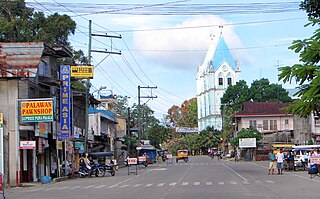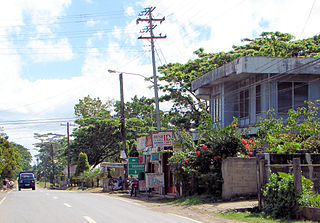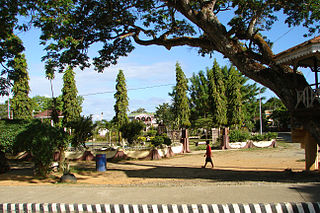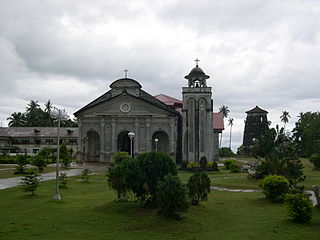This article needs additional citations for verification .(March 2013) |
Loon | |
|---|---|
| Municipality of Loon | |
 Main street through Loon | |
 Map of Bohol with Loon highlighted | |
Location within the Philippines | |
| Coordinates: 9°48′N123°48′E / 9.8°N 123.8°E | |
| Country | Philippines |
| Region | Central Visayas |
| Province | Bohol |
| District | 1st district |
| Founded | June 22, 1753 [1] |
| Barangays | 67 (see Barangays) |
| Government | |
| • Type | Sangguniang Bayan |
| • Mayor | Elvi Peter L. Relampagos |
| • Vice Mayor | Lloyd Peter M. Lopez |
| • Representative | Edgardo M. Chatto |
| • Municipal Council | Members |
| • Electorate | 30,156 voters (2022) |
| Area | |
| • Total | 125.38 km2 (48.41 sq mi) |
| Elevation | 89 m (292 ft) |
| Highest elevation | 449 m (1,473 ft) |
| Lowest elevation | 0 m (0 ft) |
| Population (2020 census) [4] | |
| • Total | 44,224 |
| • Density | 350/km2 (910/sq mi) |
| • Households | 10,696 |
| Economy | |
| • Income class | 2nd municipal income class |
| • Poverty incidence | 17.80 |
| • Revenue | ₱ 194.4 million (2020) |
| • Assets | ₱ 657 million (2020) |
| • Expenditure | ₱ 163.4 million (2020) |
| • Liabilities | ₱ 102.1 million (2020) |
| Service provider | |
| • Electricity | Bohol 1 Electric Cooperative (BOHECO 1) |
| Time zone | UTC+8 (PST) |
| ZIP code | 6327 |
| PSGC | |
| IDD : area code | +63 (0)38 |
| Native languages | Boholano dialect Cebuano Tagalog |
| Website | www |
Loon, officially the Municipality of Loon (Cebuano : Munisipalidad sa Loon; Tagalog : Bayan ng Loon), is a 2nd class municipality in the province of Bohol, Philippines which was established in 1753. According to the 2020 census, it has a population of 44,224 people. [4]
Contents
- Geography
- Topography
- Climate
- Barangays
- Demographics
- Economy
- Indigenous culture and crafts
- Tourism
- Heritage and historical sites
- Natural attractions
- Infrastructure
- Transportation
- Health and safety
- Utilities
- Education
- Notable personalities
- References
- External links
Loon was among the hardest hit towns in the 2013 Bohol earthquake. About a third of all casualties occurred in this town, and its church, dating from the 1850s, completely razed to the ground. [6]

























